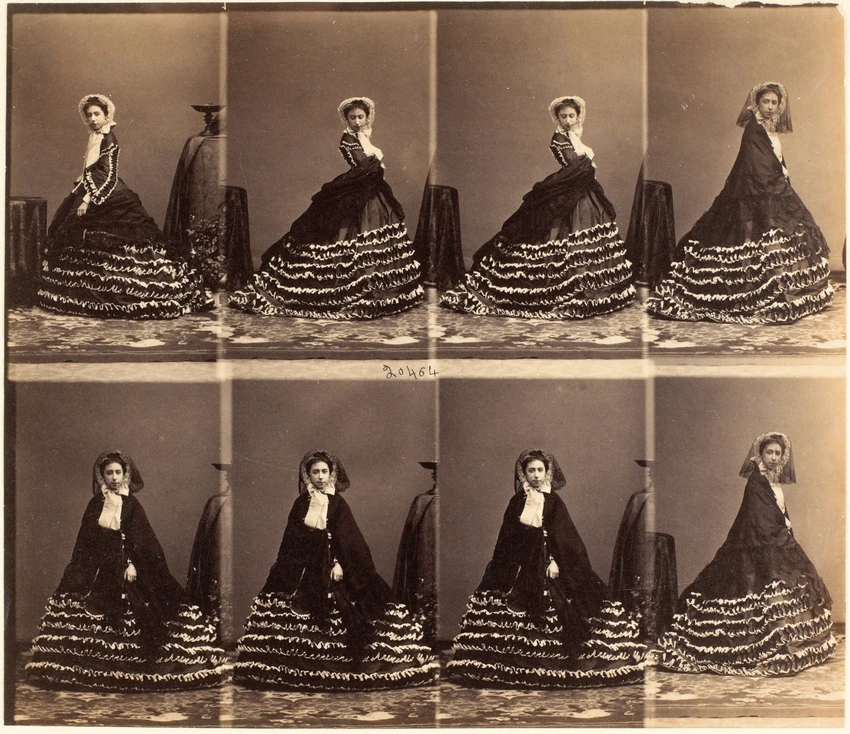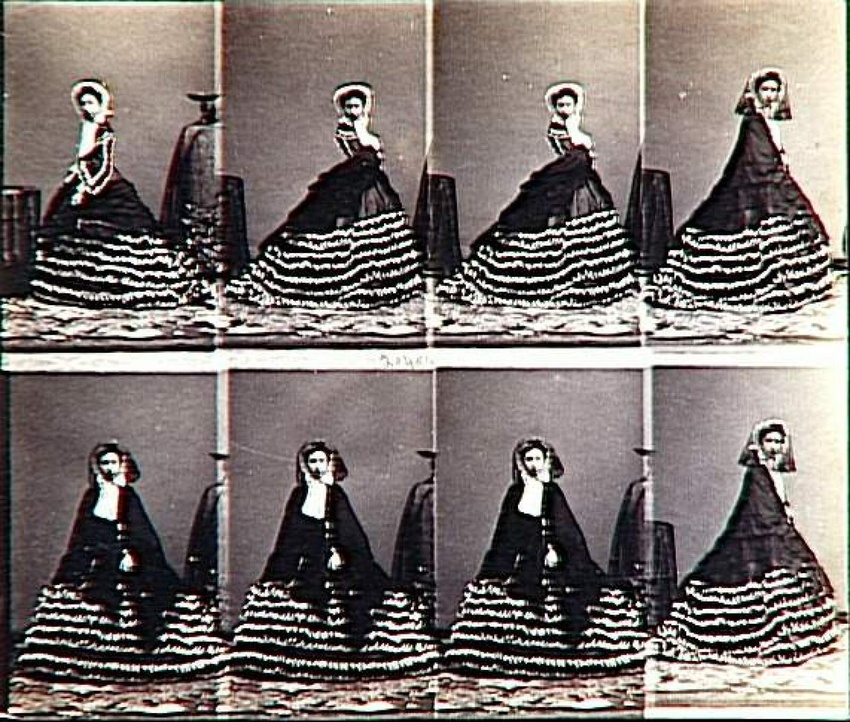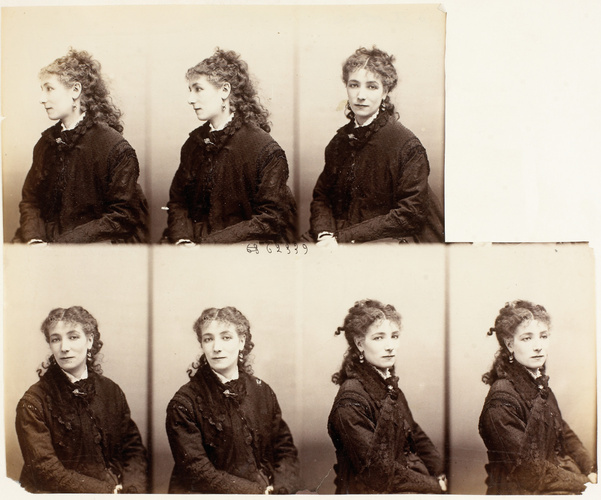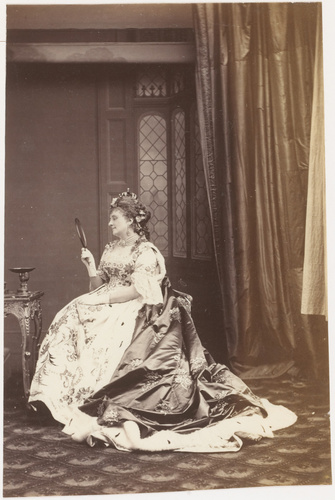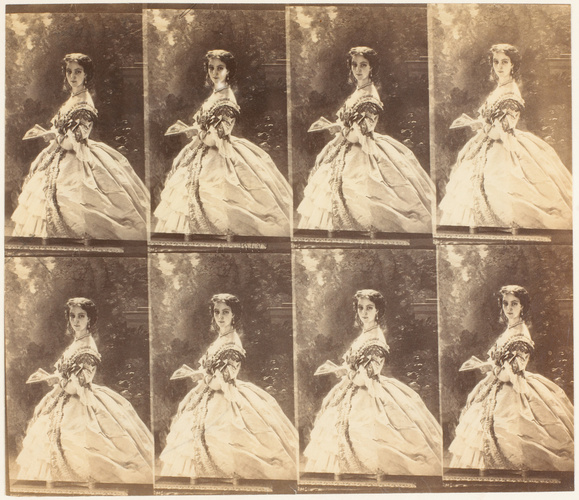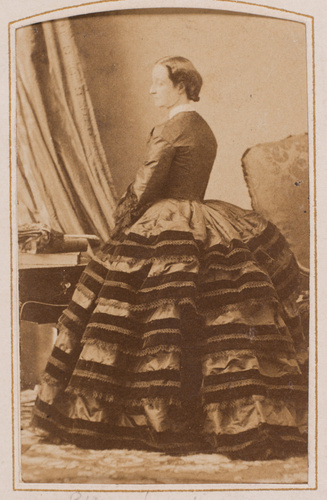Lorenza Fernández de Villavicencio y del Corral, marquise de Salar, en pied, en huit poses
The young Marchioness of Jalar went to Disdéri’s studio on the Boulevard des Italiens. At this address, lavishly laid out to flatter his well-todo clientele, the photographer had been receiving Second Empire high society since 1858. “M. Disdéri had a great project, that of founding an establishment to rival the huge establishments
in London,” E. Lacan commented in La Lumière, in 1854.
The idea was to show off one’s social status and distribute one’s picture (a full-length portrait) through the visiting card portrait (a print on albumen paper mounted on cardboard); this invention was a tremendous success, enabling a series of shots to be taken using the same negative. This “portrairuromania” [sic] lasted right into the mid-1860s before it was dethroned by the superior format, the album-card.
It was also symptomatic of this urban society; its members strolled along the boulevards and appearances were extremely important. There can be no doubt that the photographer has encouraged the young woman, full of gentle self-assurance, going as far as a faint smile, to adopt several flattering poses to show her bearing, the fabrics, and the movement of her gown to best effect.
The acquisition of a part of the Disdéri studio collection by the Musée d’Orsay has made it possible to have the use of the entire plate, before each shot was cut up and mounted separately.
